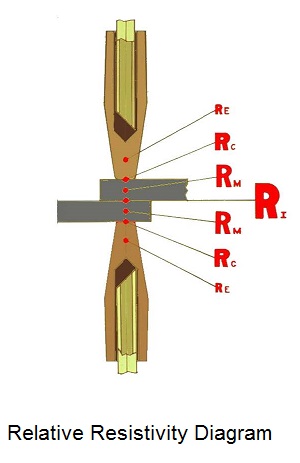
Spot Welding
Questions and Answers
Standard male cap designs are specified by the Resistance Welding Manufacturing Alliance – RWMA. These designs can be found in the RWMA Resistance Welding Manual. The standard sizes are #4, #5 and #6. These sizes represent male cap electrodes with body sizes of ½”, 5/8” and ¾” Diameter body sizes respectively. Caps can be purchased in RWMA Class 1, 2 or 3 materials. RWMA Face configurations A, B, C, D, E and F are standard. Male caps are stocked in these sizes and are usually available from stock in most standard nose configurations.
The most stocked electrode taper sizes are RWMA #4 and #5. These sizes are readily available in either full size electrodes or male and female caps. In these sizes most standard face sizes A-pointed, B-dome, C-flat, D-offset, E-truncated & F-radius are stocked.
Poor heat balance in a resistance weld is when the variables cause the weld nugget to form in a location other than the desired mating/faying surfaces. This can be caused by welding two different materials, varying thicknesses, or different surface coatings. Different electrode material, size, shape or contact face or perpendicularity to the part. Water cooling or lack of same can cause variations also. The first step is to examine the part and determine what is causing the nugget to form in this undesired location.
Misaligned electrodes could be because they are not perpendicular to the work piece. Or the two opposing electrodes do not line up with each other as shown below. The first condition can cause the electrode to make contact on the edge of the face rather than the desired face area. This puts a large amount of current through a smaller area. This leads to overheating and expulsion. It also can cause skidding of the electrode on the work surface.
The location of the weld nugget is determined by the locating the resistance center of the part being welded. The “Relative Resistivity Diagram” explains this graphically.

Every component and contact point in the weld has a resistance and contributes to the weld nugget location.
By definition - If the upper and lower halves of the resistances are equal, and RI is the largest Resistance then the weld will occur in the center. If there is any imbalance then the nugget will move up or down toward the hottest spot. This is called heat balance.
Page 31 of 44
Have a Question?
Do you have a question that is not covered in our knowledgebase? Do you have questions regarding the above article? Click here to ask the professor.
